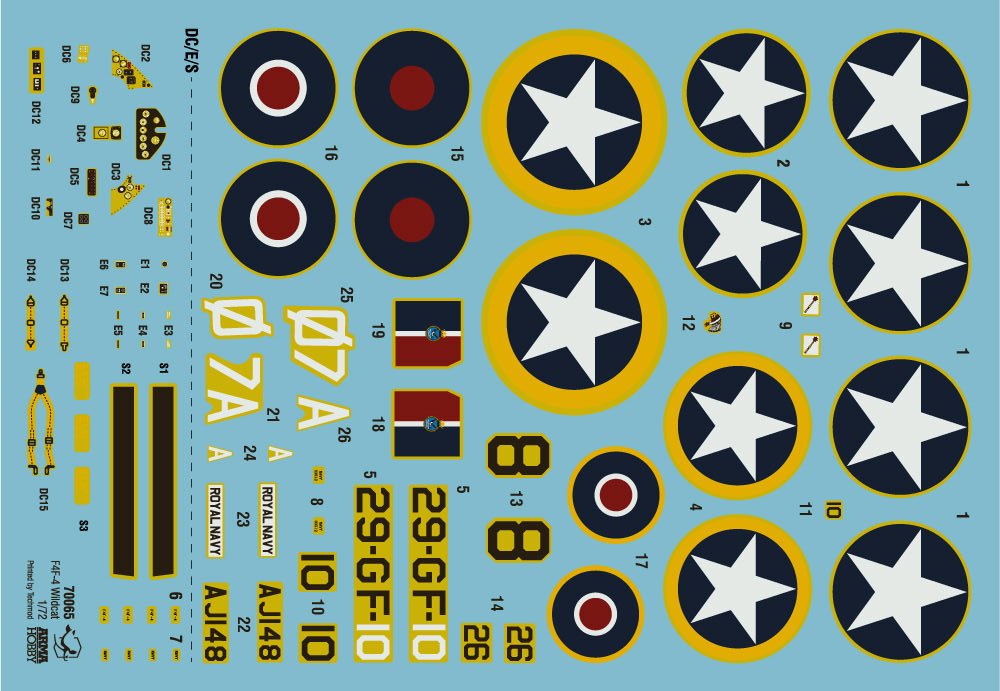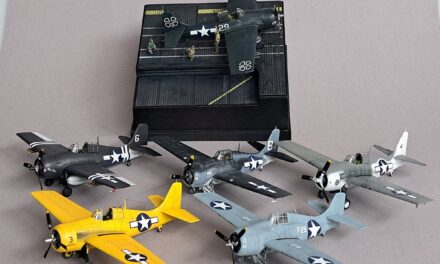
The Martlet Mk II was one of a number of versions of the American Wildcat carrier-based fighter aircraft used by the Fleet Air Arm of the Royal Navy. A total of 100 were built in two series: AM954-AM999 and AJ100-AJ153. But although their number was small, the Mk II was of considerable importance for the history of the Wildcat.
The Martlet Mk II Version
The Martlet Mk II monoplane was the F4F-3A (without two-stage engine supercharger) fitted with the folding wings of the F4F-4. The aeroplane had worse performance at greater heights than the version with the two stage supercharger. Nevertheless, it met the requirements set by the Fleet Air Arm (FAA) for carrier-based fighters. It had folding wings, which assured that it could be housed in the cramped confines of aircraft carrier hangars, while its performance was sufficient to intercept enemy reconnaissance aircraft. In comparison with the British Navy’s previous carrier fighter, the Sea Gladiator biplane, the Martlet was very modern – and it was faster and more manoeuvrable than the larger, two-seat Fulmar. The aeroplanes of the first series were characterized by a different type of Pitot tube, which was located on an extension arm attached close to the trailing edge of the left wing, and an additional fairing at the bottom of the fuselage, behind the undercarriage bay.
The Martlet Mk II in Combat. Convoys…
The Martlet Mk II was the first Wildcat to take off from an aircraft carrier that shot down an enemy aeroplane. On 13 September 1941, AM 963 from 802 Naval Air Squadron destroyed one Heinkel He 111 bomber and damaged another over the Barents Sea. The pilot was Sub-Lt. Jimmy Sleigh from HMS Victorious, which was being escorted by an older aircraft carrier, HMS Argus, equipped with 24 land-based Hurricanes. The naval aviators had been transferred to the ship along with two Martlets from their home squadron in order to provide security for a vital operation: the ferrying of No. 151 Wing RAF to Vaenga airfield in northern Russia. The Martlet pilots of 802 Naval Air Squadron achieved their next aerial victories while operating from HMS Audacity, their home carrier, which was escorting a convoy bound for Gibraltar, OG 74; the victims were four-engined long-range Fw-200 Condor reconnaissance bombers. Before HMS Audacity was sunk on 21 December, its Grummans shot down a total of seven enemy aeroplanes, with Temporary Sub-Lieutenant (A) Eric Melrose ‘Winkle’ Brown – who went on to gain great fame as a test pilot – accounting for two. The aviators were also involved in attacks against the U-boats that were stalking the convoy. They had varying luck: on a few occasions the German vessels were forced to abandon their attack and dive, however one pilot was lost to a submarine’s anti-aircraft cannon.
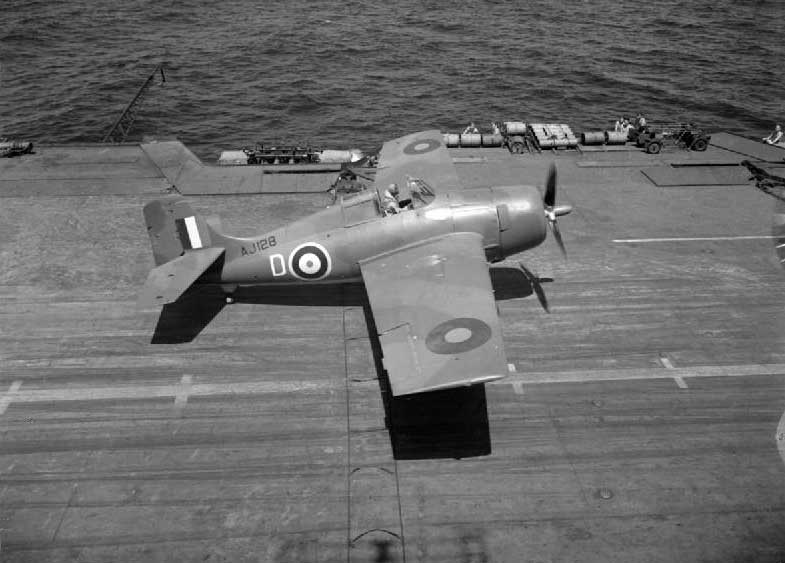
Martlet II z 888 eskadry na pokładzie HMS Formidable, 1942 r. Zdjęcie US Navy/wikimedia commons.
… and Landings
In May 1942, the aircraft carrier HMS Illustrious with two squadrons of Martlet IIs (nos. 881 and 882) took part in Operation Ironclad, the capture of the Vichy French-controlled island of Madagascar. Both units participated in the opening action of the assault: the attack on Arrachart airfield at dawn on 5 May, during which many French aeroplanes were destroyed on the ground. In the air, the Grummans from HMS Illustrious shot down three MS.406 fighters and two Potez 63-11 bombers of the Vichy French, themselves losing one Martlet.
In August 1942, aircraft from HMS Illustrious and HMS Formidable (the so-called “Triple Eight” 888 Martlet squadron) ran into units of the Imperial Japanese Air Force while in the Bay of Bengal. The aviators from “Triple Eight” shot down a Kawanishi H6K Mavis flying boat.
The final action in which Martlet IIs took part was Operation Torch, in the course of which fighters from 888 squadron stationed aboard HMS Formidable provided aerial cover for the Allied seaborne landings in North Africa. During the campaign one Lt. D. E. Jeram shot down a French Bloch 174, while a few days later, after the French and British had agreed an armistice, he destroyed a Junkers Ju 88 together with his wingman. By then, the remaining squadrons had already been re-equipped with the Martlet Mk. IV, which was soon followed by the Mk.V.
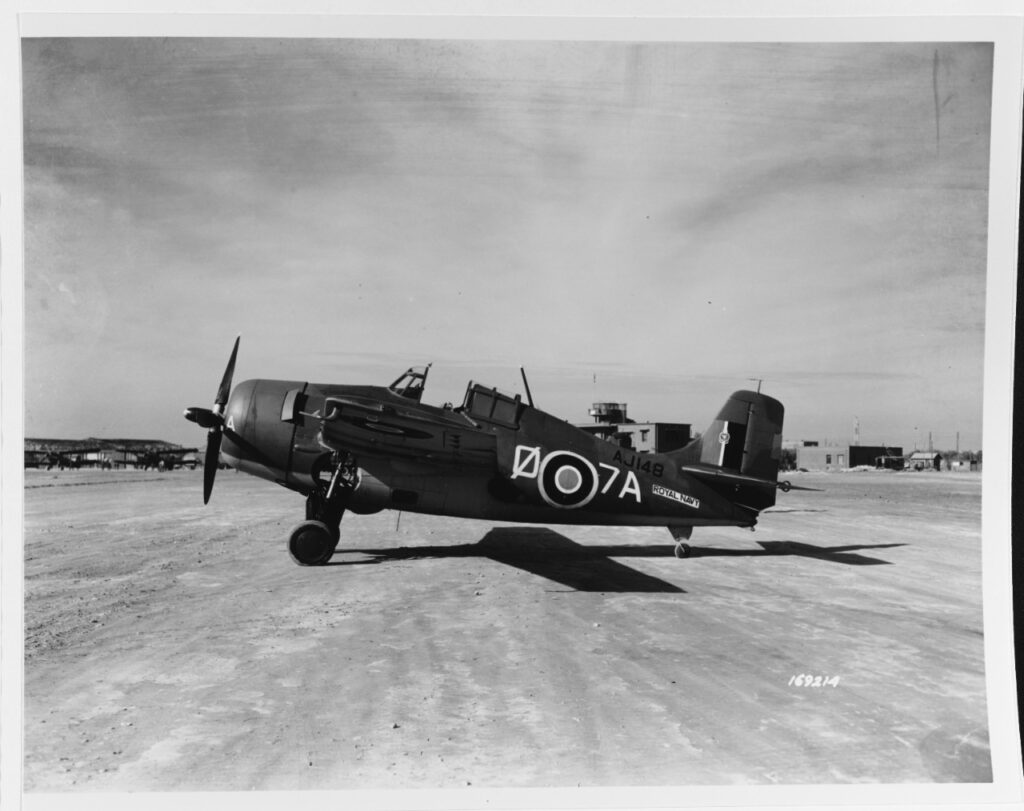
British Royal Navy Martlet II fighter (Serial # AJ148) Parked at La Senia air base, Oran, Algeria, 14 December 1942. Photograph from the Army Signal Corps Collection in the U.S. National Archives.
The Martlet Mk II AJ148
The Martlet Mk. II AJ148 from 888 Naval Air Squadron (“Triple Eight”, HMS Formidable) presented on the box of our 70047 F4F-4 Wildcat® came from the series that was fitted with the American Pitot tube and did not have a fairing under the fuselage. The fighter took part in Operation Torch, for the duration of which it was painted with American markings (white stars on a navy blue background). British aircraft were decorated with these emblems in order to weaken the resistance of the Vichy French, who regarded the British – against whom they had fought during Operation Catapult (1940), in Syria (1941) and on Madagascar (1942) – with hostility. Once the fighting drew to a close, the British insignia were returned, as can be seen on a photograph taken on 14 December 1942 at Oran airfield (Algeria). The aircraft was in Temperate Sea Scheme camouflage and had tactical number Ø-7A.
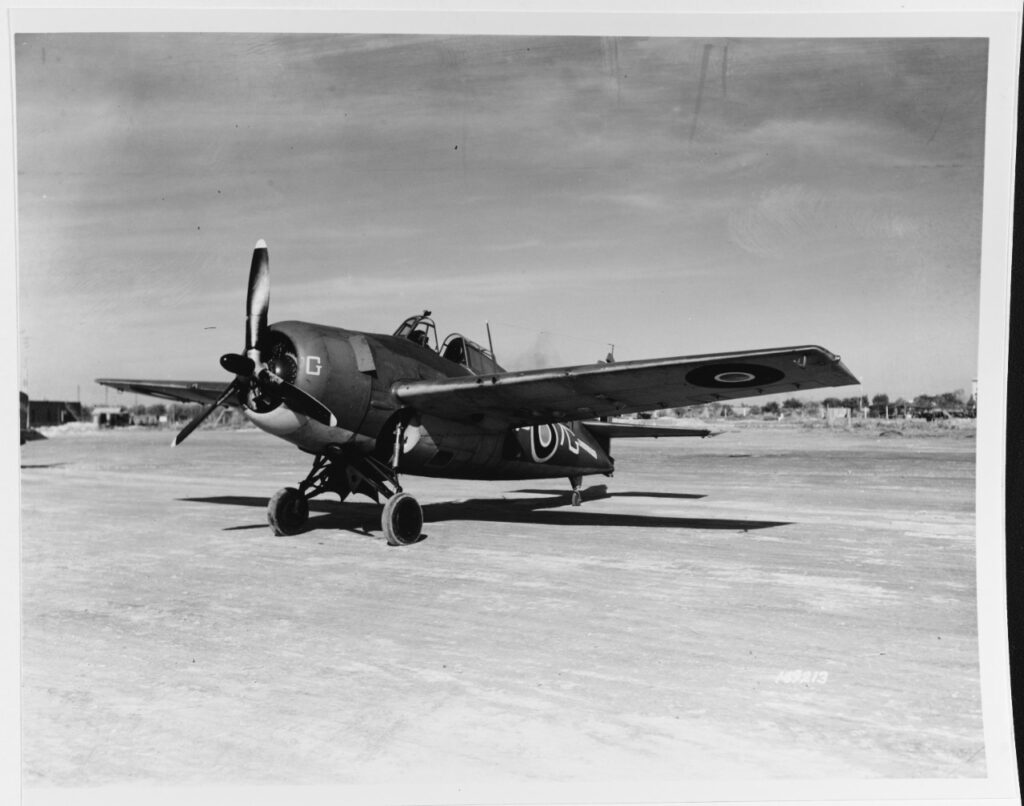
Another Martlet II fighter parked at La Senia air base, Oran, Algeria, 14 December 1942. Photograph from the Army Signal Corps Collection in the U.S. National Archives.
English translation by Maciek Zakrzewskiu
See also:
- Buy F4F-4 Wildcat Expert Set kit in Arma Hobby webstore
Hurricane Mk IIc Expert Set – Galeria – Aliaksandr Laktsevich
Modeller happy enough to work in his hobby. Seems to be a quiet Aspie but you were warned. Enjoys talking about modelling, conspiracy theories, Grand Duchy of Lithuania and internet marketing. Co-founder of Arma Hobby. Builds and paints figurines, aeroplane and armour kits, mostly Polish subject and naval aviation.
This post is also available in:
 polski
polski



